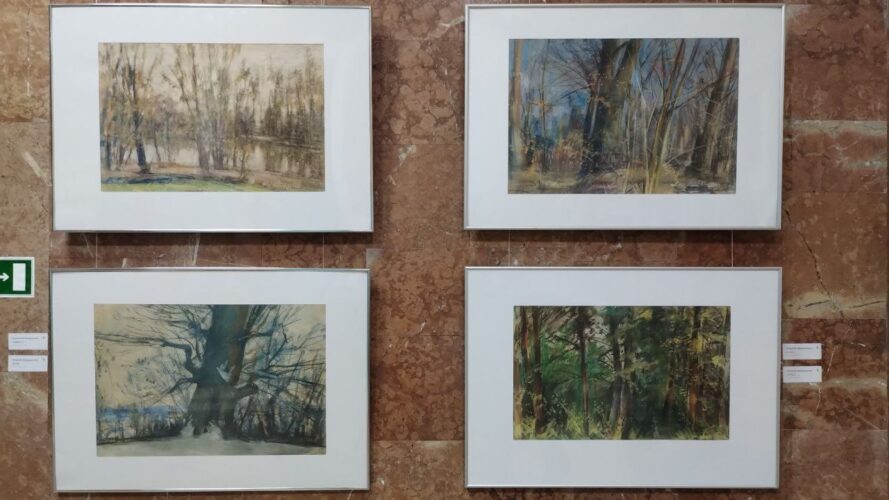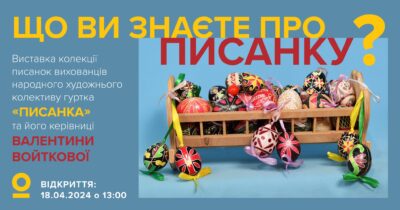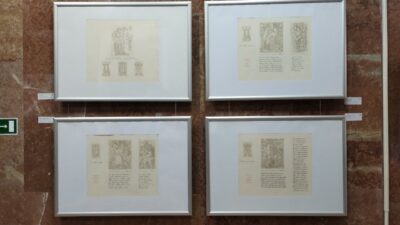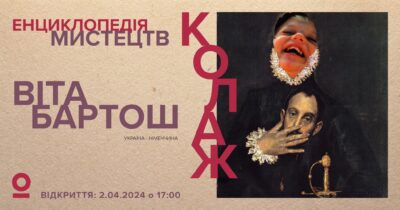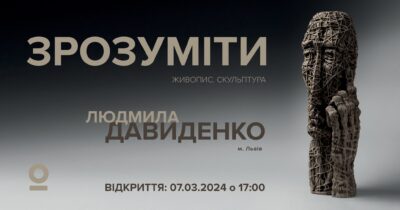KhRMA continues the project “Cheers!” dedicated to the artists who will be celebrating their anniversaries in 2024. Despite the bloody war and all the extremely difficult challenges that have fallen to our lot, Ukraine is fighting for our Independence, for Freedom, for Identity. For the right to live freely on our land. Our museum is also fighting, popularizing the national art that identifies us as Ukrainians.
“If you look at Oleksii Shovkunenko’s recent drawings for a long time, you can see how the lines of trees are carved in them with a pencil, how they are cut down, how the strokes are shimmering. In all this, I see a change in the artist’s different moods, his state of mind, sometimes depressed, sometimes happy, sometimes sad. He was a wonderful artist. You want to study his works endlessly, and every time you find something new in them.” This is how the artist Mykola Hlushchenko (1901-1977) recalled the paintings of Oleksii Shovkunenko.
The artist’s contemporaries said that he was extremely fond of nature: he admired the blue of the mighty Dnipro River, marveled at the golden haze, clear air, silver dew on the grass, the shuddering of flower petals under heavy raindrops, and a sleepy forest covered with snow. All this he talentedly conveyed in his paintings and graphic works, in particular pastels and watercolors. With special skill, the artist reproduced the play of light and transparency of the air. Although the artist is considered a master realist, one cannot help but notice the influence of impressionism in his work, as he sought to capture not only the object depicted, but also his impressions.
“Oleksii Oleksiiovych’s favorite motif,” stated the artist Mykhailo Shaposhnykov (1909-1989), “was perennial oaks. With exceptional accuracy, he conveyed the images of these giants, achieving great emotionality and artistic expressiveness. “How much these trees have seen during their lives!” the artist said with admiration. A clear, strong drawing, sometimes extremely generalized, sometimes elaborated forms convey the inexhaustible forces of life, the embodiment of an unshakable force. A deep philosophical meaning is embedded in these works by Shovkunenko.”
But it was not only nature that the artist depicted. He loved life, people, and was extremely hardworking and demanding of himself. In his portraits, he sought to convey not only the likeness but also the psychological state of a person. His models were not only representatives of the creative and scientific intellectuals, but also ordinary workers and peasants. From the memoirs of actress Nataliia Uzhvii (1898-1986): “I often wondered with what love, inspiration, and great efficiency this artist worked. The portrait was painted in unsatisfactory conditions: in a small room with one window. The lighting was poor. I told the artist about this, but he replied: “It’s okay, it’s important for me to capture the image, the inner world of the image and convey it.”
His students affectionately called him Batia (slang, eng. Dad). And for good reason, because he was not only an excellent teacher, but also a sensitive person. Serhii Adamovych (1922-1998) recalled with great gratitude how his teacher, when he saw that he was wearing only galoshes, asked his wife Oleksandra to buy shoes for the student.
The memoirs of Oleksii Shovkunenko’s contemporaries show that despite all the trials of totalitarianism, he remained a talented person who was in love with people and the world around him, and who devoted his entire life to serving Ukrainian art.
REFERENCES:
Oleksii Shovkunenko (21.03.1884, Kherson – 12.03.1974, Kyiv) was a Ukrainian watercolorist, master of landscape and portraiture, and teacher. People’s Artist of the USSR (4.1.1944). Full member of the Academy of Arts of the USSR (since 1947).
1899 – apprentice in an icon painting workshop in Kherson. He received his art education at the Odesa Art School (1908) and the St. Petersburg Academy of Arts (1917).
1913-1919 – participated in the exhibitions of the Society of South Russian Artists (Odesa). Lecturer at the Odesa Polytechnic of Fine Arts (since 1926), Odesa Art Institute (since 1929), professor at the Kyiv Art Institute (1936-1965).
1937 – won a gold medal as the best watercolorist at an international exhibition in Paris.
1958 – in Brussels, watercolors and graphic works dedicated to the Dnipro Hydroelectric Power Station were awarded silver medals. The Dniprobud series launched the trend of industrial landscape in Shovkunenko’s work.
1970 – State Prize of the Ukrainian SSR named after Taras Shevchenko. The Kherson Art Museum is named after the artist. According to the museum’s official data, the collection contained 154 works by Oleksii Shovkunenko.
31.10-04.11.2022 – the museum was looted by the Russian occupiers. More than 11,000 of the most valuable pieces of art in the collection were stolen out of 14,000.
